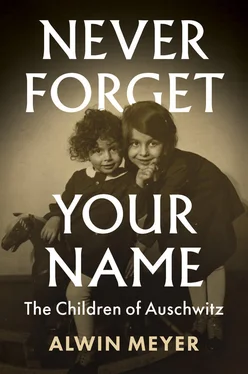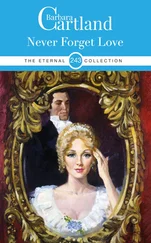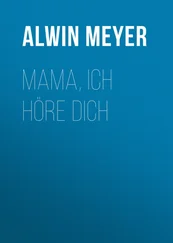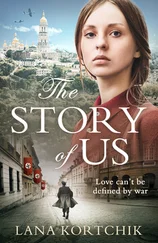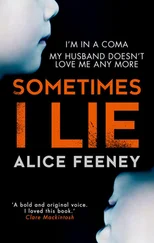Around 1920, Hajdúböszörmény had a population of some 28,000, including about 1,000 Jews. The history of the Jewish community began in the early nineteenth century, and the synagogue was built in 1863. 102
The family valued Jewish rites, customs and traditions, ‘as it should be’. They kept a kosher household. Every Friday evening and Saturday, Salomon Klein went with the twins to the synagogue. The women only went on the High Holidays. ‘That’s how it was in Hungary at the time.’ Salomon and Lilly Klein spoke fluent Hungarian, Yiddish and German. ‘We children only spoke Hungarian. Our mother could also speak Slovakian.’ Her family had moved, around 1920, from Slovakia to Miskolc in northern Hungary.
From 1939, Otto and Ferenc attended the Jewish primary school in Hajdúböszörmény. In the afternoon, they both went to Talmud Torah school. There was a group of pupils in the neighbouring Christian school who made antisemitic comments. ‘They would fight us when we were coming home.’ The Jewish children didn’t put up with that for long and fought back. ‘Then they left us alone.’
‘There was not a lot of antisemitism, but we boys had few non-Jewish friends. Somehow, that didn’t work.’
Their father’s brothers and sisters lived in Debrecen, the second-largest city in Hungary, 20 kilometres from Hajdúböszörmény. It was the largest industrial and trading centre in the region. There were 9,142 Jews living in the city in 1941, 7 per cent of the total population. 103
‘We enjoyed being with relatives from Debrecen. Everyone got on well.’ The boys also enjoyed going to Miskolc, two hours’ drive from Hajdúböszörmény, where their mother’s family lived. ‘There was a small spa resort nearby where we would go swimming during the holidays.’
Miskolc, at the centre of northern Hungary, is the country’s third-largest city. The first Jewish families settled there in the late eighteenth century. In 1941, there were 10,428 Jews in Miskolc, around 14 per cent of the total population. 104
Otto and Ferenc liked to spend their free time at their father’s work in Hajdúböszörmény. They loved to play hide-and-seek on the large site. Sometimes, the adults could be persuaded to look for them. ‘They would look for an hour, but they could never find us.’ In the end, they had to leave a clue somewhere on the site. Only then were they found.
‘We had a good time playing together.’ They also played in the small brickworks. ‘When there was no one there, we would make roof tiles for fun. That was a fantastic game.’
Until his death in summer 2014, Otto Klein retained only good memories of the first years of his life. ‘We were a respected family. My parents loved each other and the children. We had a nice, happy life.’
Yehuda Bacon was born in the ‘city of black diamonds’, known far and wide for centuries as a city with large coal reserves – a mining and iron and steel city. It was Moravská Ostrava (Mährisch Ostrau), today part of Ostrava. The city is in the north-west of the Czech Republic, at the tripoint junction of Poland, Slovakia and the Czech Republic.
In the nineteenth century, it was one of the cities where Jews were not allowed to settle. Some skirted the prohibition by living outside the city, on the other side of the Oder in Poland. Jewish families managed to settle in Ostrava gradually from 1792, and more so after 1848. Brown coal was discovered in the mid eighteenth century, and industrialization made the city increasingly attractive for Jewish immigrants. They were strongly represented in economic life and commerce, as entrepreneurs and in the professions.
A Jewish school was established first of all, then, ten years later, a two-class and then four-class state primary school. By the end of the nineteenth century, the school had a good 300 pupils. In 1872, a plot was acquired for a cemetery, and four years later for a synagogue. On 15 September 1879, the new house of prayer was officially opened. Within fifty years, a total of six synagogues were built. 105
The historian Hugo Gold wrote of the dedication of the first synagogue: ‘This ceremonial act took place before a crowd of thousands, and the beautiful, truly uplifting ceremony presented to the people of Ostrava a dignified testimony to tolerance, of which the population of some other cities could be rightfully envious.’ 106
In 1900, the Ostrava Jewish community celebrated its twenty-fifth anniversary. It had been built up from nothing. The rabbi recalled in his ceremonial speech:
It is easy to build up from something that already exists, to work where there is already something. It is easy to enlarge on what you already have, but it is difficult to build and plant where the ground is completely barren, where there are no traditions. To adapt the words of the poet: ‘Woe to you that you are not a grandson!’ That’s how it was in Mährisch-Ostrau as well. There used to be no Jews living in this city, there were no institutions or memories, nothing to connect to, everything had to be built up from scratch. 107
But the Jewish community grew quickly. In 1929, it had 10,000 members living in thirteen localities in and around Ostrava. 108
Yehuda Bacon was born on 28 July 1929 in Ostrava. Hanna (Channah) and Rella, his sisters, were six and five years older than him, respectively. Their father, Isidor Bacon, was a hardworking manufacturer and businessman. He owned a leather factory with his brother Baruch. Their mother Ethel was a housewife who looked after the children’s upbringing. The Bacon family was religious. Yehuda had religious instruction. Shabbat, the weekly day of rest from Friday to Saturday evening, was of ‘great importance’ for the family. ‘The candles were lit on Friday evening at dusk, the Shabbat bread eaten and a festive meal prepared.’
Jews were commonplace in Ostrava. Relations between Jews and non-Jews were relatively good. ‘I didn’t experience any antisemitism at first. We lived a completely “normal” life.’
Robert (Yehoshua) Büchler was born on 1 January 1929 in Topol’čany in western Slovakia, 110 kilometres from Bratislava, a town with a population of 12,000. Around 1 in 5 inhabitants was Jewish, like the Büchlers.
Some 70 per cent of the population worked in agriculture. Robert’s father Josef, however, came from a commercial family, selling hand-made suits, shirts and work clothing at markets. He was the only one of thirteen siblings to have attended secondary school. He wanted to study at university but was conscripted into the Austrian army during the First World War. In 1918 he obtained a position as a Prokurist (authorized signatory) in Produktiva, a farm trading company in Topol’čany. Here he met the office clerk Terezia Weinberger, his future wife.
My father’s ancestors had lived for around 200 years in the city. My mother came from a small village called Oslany, 30 kilometres away.
Our grandmother had stalls on the market square in Topol’čany and in the surrounding villages. It was a real family business. Of my grandparents’ thirteen children, five were tailors like my grandfather. Everything they sold was hand-made.
When I was a little older, I helped with sales. It was a great treat for me and I loved doing it.
There were Jewish merchants in Topol’čany already in the fourteenth century. The first synagogue was built in 1780. Five years earlier, the first Jewish cemetery was dedicated. It was one of the oldest in Slovakia. The Jewish population grew steadily and, in 1828, 561 of the population of 2,500 were Jews.
In 1895, a dream harboured by the Jewish community came true with the start of construction of the Great Synagogue. It was completed five years later. Hundreds of guests from all over the country, representatives of the communities, rabbis and the Jews of the city attended the opening. Thereafter, the 500-seat synagogue was the centre of Jewish religious life in Topol’čany. It was considered one of the most beautiful synagogues in Czechoslovakia. In the last two decades of the nineteenth century, representatives of the Jewish community were elected for the first time to the city council, and two of its members later became deputy mayors. Around 1900, there were 1,676 Jews in Topol’čany.
Читать дальше
